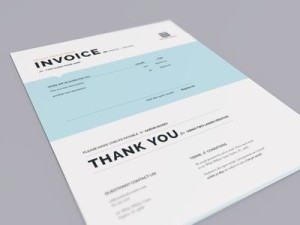CEOs of small but growing businesses can often solve their working capital challenges by entering into a factoring relationship, where they sell their accounts receivables to a factor. Factoring is usually quicker and more readily available and flexible than small business lending. However, there are a lot of misconceptions and myths about factoring in the marketplace, some of them as a result of the practices of some bad apples in the industry. With that in mind, we decided to put together the Q and A below on factoring, because, to quote the late, great retailer Sy Syms, we believe that “an educated consumer is our best customer”.
-
How do you describe factoring to CEOs who have never heard of it?
Invoice Factoring is a cash flow management tool that can provide a business with a continuous source of operating capital from its accounts receivable, allowing a company to pay creditors promptly, meet payroll, maintain overhead expenses, pay taxes or simply relieve the financial burden experienced during rapid growth periods.
Invoice factoring works for businesses that sell products or services to other businesses that have to wait for payment (i.e., payment is not immediate, unlike through a credit card transaction). As opposed to waiting 30, 60 or 90 days for the actual invoice payment, factoring is the process of converting a company’s accounts receivable into instant working capital by selling invoices to a factoring company at a slight discount to the face value of the invoice. The factoring company pays the company (for example) 80% of the face amount of the invoice the day the invoice is “factored”, and then when the factor collects the invoice from the company’s customer some time later, the factor pays the remaining balance to the company, less the factoring fee.
-
What are common scenarios in which CEOs would be better served by working with a factor of accounts receivable than using equity or debt financing?
Equity financing is typically very expensive for the types of smaller businesses that use factoring solutions ($1-50 million in annual sales), where the equity investor usually seeks a large percentage of the company at a low valuation and a variety of control and reporting elements from an entrepreneur who is running and building the company, day-to-day. You worked hard to build your business, and if you sell equity, you have now injected partner management issues into your very busy day.
In contrast to equity, factoring or debt capital is a relatively cheap solution.
Factoring is one form of debt financing for smaller businesses. Debt financing ranges from extremely expensive solutions like merchant cash advance, all the way to relatively cheap bank debt. Factoring, situated roughly in the middle of that range, has the advantage of offering flexibility and not locking the business into a solution as it grows. A smaller business can factor all of its receivables invoices or only a portion of them.
Most banks will only lend to companies with established and clean credit history. For many startup businesses or those in rapid growth mode, access to that channel is lengthy and often simply unavailable. Factors will work with newer businesses and those where the business or owner has background issues like tax liens or bankruptcies, or an operation that isn’t profitable – situations that cause real problems for banks to finance.
When making a funding decision, factors focus on the creditworthiness of a business’s customers while banks will only focus on that business’s established credit history and cash flow. Additionally, since accounts receivable funding is not a loan, there is no debt on the company’s balance sheet.
Best of all, factors can approve a company for funding in a week, while banks may take months to approve a loan.
Whether your smaller company is an information technology (IT) consulting shop, a manufacturer, importer, or a service provider to other businesses, selling your accounts receivable to a factor could be an excellent financing solution.
Successful factoring clients typically “graduate” at some point to cheaper bank financing.
-
What are some of the most common misconceptions CEOs have when it comes to factoring?
That factoring may alienate or jeopardize your sensitive relationships with your customers – good, professionally run factors will treat your customers with “kid gloves”, whether it is to confirm the validity of an invoice or notify them about payment. In fact, factors provide growing small businesses with a great service – beyond “just” advancing funds to its customers, factors become a quasi-back office for your company by handling aspects of bookkeeping, ledgering, collections, and credit guarantees, often gently assisting in putting order in a sometimes disorderly or understaffed process at a smaller, growing company. This benefit could be well worth the incremental cost of selecting a factor over a somewhat less expensive alternative for your capital.
-
What are a few questions CEOs should ask of themselves before factoring?
Are your customers slow payers or fast payers? The longer it takes for them to pay, the more expensive it is for your company. Is my profit margin vs. time to collect an invoice sufficient for the cost of factoring to make sense? Would my controller or receivables person benefit from the helpful “shadow back office” functions provided by factors?
-
Are there risks or downsides of factoring?
The industry has a number of undercapitalized and/or over-leveraged, “mom and pop” operators that may not be there when you need them the most. The scary thing about an overleveraged factor is that you (as their client) are relying upon the factor to fund you to meet your payroll every week. If that factor has a problem with one of its major clients, that factor’s bank may stop funding ALL of the factor’s clients immediately – including you. If that factor is not well-capitalized away from its bank line, your business can be imperiled through no fault of your own. We have seen this happen.
So the lesson is to find out who owns and backs your prospective factor, and look into their reputation with customers.
Again, cost can be an issue if your company has a good portion of receivables that pay late, especially over 90 days.
Some factors are less transparent than others, in terms of overall fees charged and reporting on your receivables. Make sure you understand all the fees. Make sure that your factor provide you full transparency into your invoice collections through web portal access into their accounting system or a comparable method, and that reconciliations are done frequently, preferably daily.
* * *
We are always here at Plus Funding to answer your questions and help, whether you have $100,000 of receivables a month that you want to factor or $2 million.

 I just returned from a trip to Texas that made me feel really good about what we do – helping businesses grow and creating good jobs that help families and communities, through a genuine public-private partnership.
I just returned from a trip to Texas that made me feel really good about what we do – helping businesses grow and creating good jobs that help families and communities, through a genuine public-private partnership.




